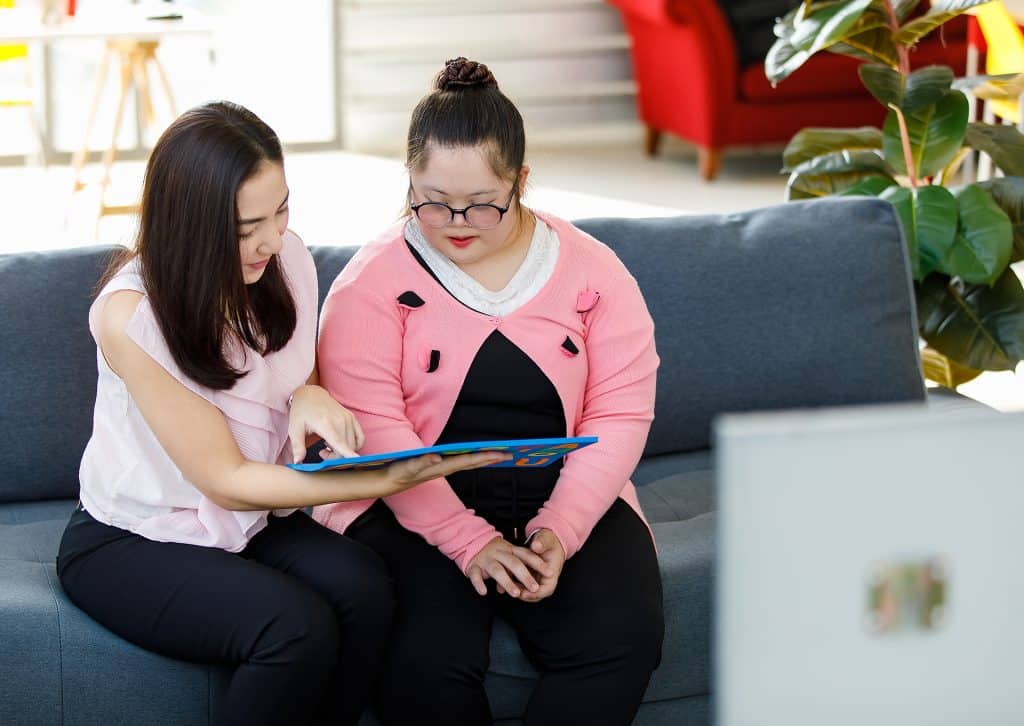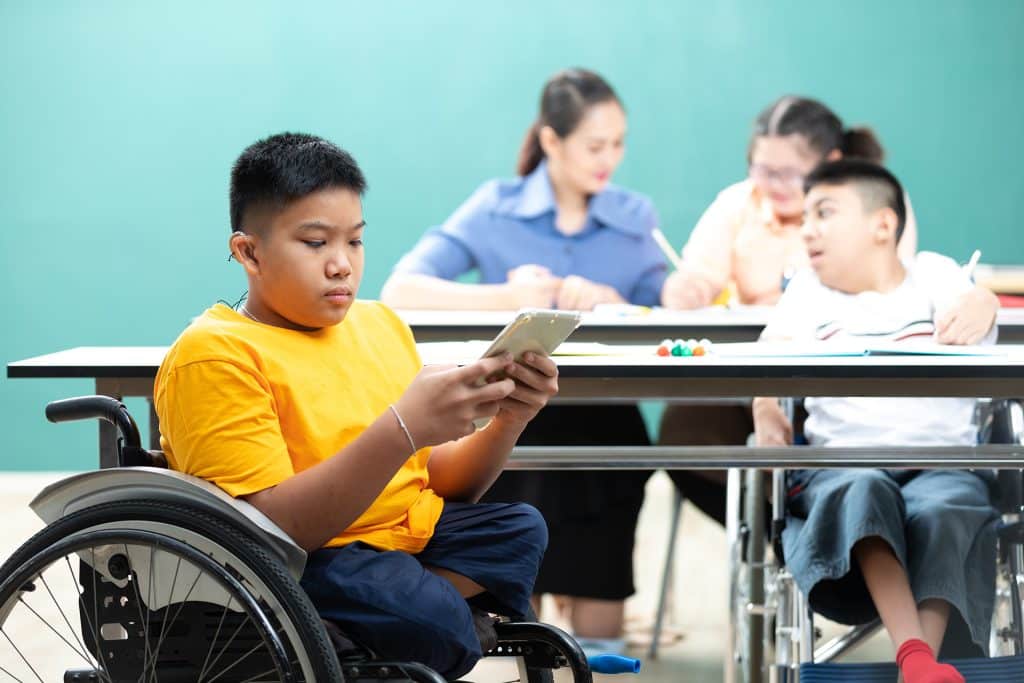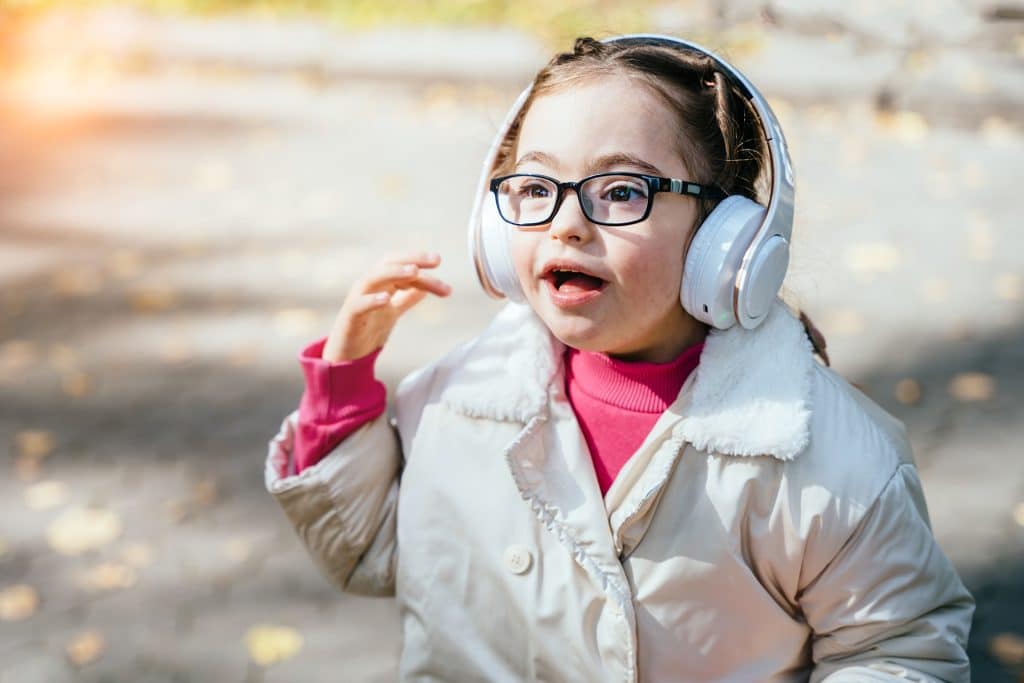Today, around 1 in 44 children in the United States have been diagnosed with Autism Spectrum Disorder (ASD), according to the CDC’s Autism and Developmental Disabilities Monitoring Network.
It’s important that these children, and their adult counterparts, have access to effective treatments for ASD, so they can live their lives as successfully and independently as possible. Thankfully, assistive technology is one very important element of autism treatment that can be life-changing for people with ASD.
So what is assistive technology? And how is it used in everyday life?
Assistive Technology for Autism
Assistive technology (AT) refers to technology that can be used to support and assist people with autism, as well as other related disorders and disabilities. The Technology-Related Assistance for Individuals with Disabilities Act of 1988 (Public Law 100-407) defined AT as any item “used to increase, maintain, or improve functional capabilities of individuals with disabilities.”

There is a wide range of technology that can be considered AT, and all of it typically falls into three groups – low-tech, mid-tech, and high-tech.
Low Tech: These are simple and rudimentary tools that are also both economical and effective. Low-tech assistive technology for autism includes objects like flashcards, board games, dry-erase boards, picture boards, etc.
Mid-Tech: These are simple technological devices that often involve switches and battery-operated devices. Mid-tech assistive technology can include things like tape recorders, calculators, headphones, etc.
High-Tech: At the top are high-tech assistive technologies, which are typically complex and expensive devices that require a higher degree of maintenance than either low or mid-tech devices. High-tech AT can include language apps, tablets, complex voice output devices, etc.
These technologies are used to help individuals with autism develop skills including but not limited to:
- Social skills and communication
- Language
- Time management and organization
- Reading, writing, and math
- Sensory management
- Emotional understanding and regulation
- Safety
- Daily life
Learning
Learning is one of the main areas of life where assistive technology can come in handy. Children with autism have a much higher likelihood of comorbidities with learning disorders and other neurodevelopmental disorders. Intellectual disability, ADHD, anxiety, etc can allpose a series of challenges that make conventional learning difficult.

There are many forms of AT that can be used to help facilitate learning for children with autism, including:
- Sensory tools to increase focus, such as stress balls and weighted vests.
- Cuisenaire rods for interactive learning
- Color-coded schedules and planners
- Educational audiobooks, recordings, and videos
- Calculators
- Noise-reducing headphones
- Learning apps
- Speech-to-text software
- Mind-mapping software
Communication and Social Skills
Struggling to communicate, socialize, and further develop social skills is something that every individual on the autism spectrum experiences, though the extent of these difficulties will vary from person to person. While some individuals may be entirely non-verbal, others may simply struggle to express their thoughts and feelings in a one-on-one conversation.
However, virtually every person with ASD can benefit from one or more of these communication devices for autism:
- Picture boards and cards
- Speech-generating apps for voice substitutions and building
- Card and board games are designed to teach and reinforce social skills and emotional understanding
- Interactive apps
- Highly interactive AI and robots
Assistive technology for communication is also known as augmentative and alternative communication (AAC). AAC devices for autism can encompass any device that is used to aid communication.
Sensory Challenges
Many people with autism experience sensory issues that can result in over-responsiveness or under-responsiveness to a range of sensory stimuli. This includes sight, sound, taste, touch, and awareness of bodily sensations and movements. Assistive technology can be used to both regulate sensory systems and calm the nervous system when individuals are triggered by these stimuli.

AT for sensory challenges can include:
- Noise-canceling headphones
- Weighted vests
- Tinted glasses
- Trampolines and swings
- Ball pits
- Sensory apps for meditation or focus
Safety
Children with autism, and even some adults, can sometimes pose a danger to themselves. They may do things like run away, run into traffic and hide from their family. Unfortunately, conventional tactics such as baby gates, door chains, and locks may not always be enough to keep children indoors. Thankfully, there are a number of assistive tools that parents and caregivers can use to ensure the safety of these individuals, such as:
- ID bracelets
- Tracking device
- Airtags
- Any other card, tag, etc that can be used to track someone’s location.
Individuals with ASD face a myriad of challenges in everyday life, and assistive technology can offer a great deal of help. AT does not have to be expensive either – there are many simple and affordable alternatives to more complex high-tech devices. Whether they are purchased from an app store or a stationary store when the right AT is provided for certain issues, your child or loved one will appreciate it.
If you need more information regarding appropriate assistive devices for your child or loved one, our team at Bolling Behavioral Consulting can help. Fill in our online booking form or call 404.981.4105 to book your first free consultation.





Recent Comments